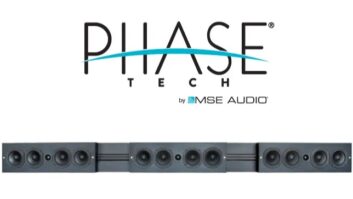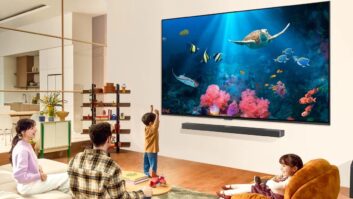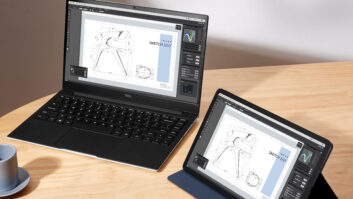QINGDAO, CHINA –
Tablets, Androidbased
smart TVs and statistics underscoring
the rapid growth of China’s
CE market captured the attention of attendees
at the China International Consumer
Electronics Show (SINOCES),
where laptops and 3DTVs mingled with
washing machines and personal grooming
kits on the display floor.
Tablets put in their first appearance
at the show, with Chinese companies
Lenovo and Haier showing their first
Android models for the China market.
For its part, Chinese supplier Hisense
showed its first Android-based smart
TVs. (See story for details on
the tablet and TV launches.)
The 11th annual event, which is the
eighth to be co-sponsored by the Consumer
Electronics Association (CEA),
was forecast to be the largest in the
show’s history when it kicked off July 7
for its four-day run in Qingdao, a port
city that is one of China’s largest manufacturing
centers for CE and appliances.
The show draws China-based retailers
and distributors as well as some
international attendees, and was expected
to attract more than 80,000 attendees and 532 exhibitors, up from
2010’s 65,375 attendees and 503
exhibitors, according to show organizers
and sponsors. Final results haven’t
been announced.
The number of international attendees
was up this year, said CEA president/
CEO Gary Shapiro. International attendees
included such U.S. retailers as
BrandsMart, Office Depot, RadioShack,
Best Buy and Fry’s Electronics, whose
president Randy Fry is also CEA’s
chairman.
Show sponsors included various Chinese
government ministries and CEA.
The show’s organizers were the Qingdao
municipal government and the China
Chamber of Commerce for Import
and Export of Machinery and Electronic
Products.
Although China-based companies
such as Hisense, Haier and Lenovo,
and China wireless carriers such as
China Telecfom, dominated the show,
the event also attracted global brands
such as Siemens’s appliance group and
Panasonic, which exhibited its 103-inch
3DTV. Microsoft showed up as a firsttime
exhibitor.
The companies exhibited at a show
whose key themes included Cloud computing,
which “has become the future
development trend in the electronics industry,”
said Chamber of Commerce VP
Yao Wenping during a pre-show press
briefing. Other technologies on display
included networking and green and
low-carbon-footprint technology.
Besides serving as a showcase for
these technologies, SINOCES is also
“an effective springboard for overseas
companies to enter the Chinese market,
one of the best portals for Chinese
companies to enter the world market,
and a major power propelling the development
of the global consumer electronics
industry,” Wenping said.
On a similar note, CEA’s Shapiro said
products introduced here and at January’s
International CES “not only create trade
but jobs and economic growth.” Based
on the strength of CES and SINOCES,
he said, “the world CE industry is becoming
the engine of the world economy.”
SINOCES has been a major factor
in improving and growing China’s CE
industry, Wenping contended. As a result,
“the position of Chinese consumer
electronics enterprises is improving in
the global trade system.” For now, however,
she admitted that “Chinese enterprises
don’t have the power of influence
… corresponding to our economic
power in global trade.” For example, she
said, “although Chinese enterprises have made more and more frequent attendance in world
first-class electronics shows such as CES, CeBit and IFA,
it is still difficult for us to play the leading role in such shows
for various reasons.”
Nonetheless, she said, “Chinese consumer electronics
providers are gradually growing into international group
corporations of world influence.” She later told TWICE
through an interpreter that Chinese CE companies could
become “first class in the world” to rival major Japanese
and Koran brands. “We have strong confidence here,” she
said.
China’s CE industry has grown to the point that in 2010,
China’s imports and exports of CE products hit $593.5
billion, accounting for 20 percent of China’s total imports
and exports, Wenping said. During the past 10 years, the
average growth rate in domestic CE sales has been 24
percent, she noted.
In a separate presentation during the show’s Consumer
Electronics Industry Summit, Germany-based research
company GfK Retail and Technology forecast that China’s
share of global retail-level CE sales will grow from 10
percent in 2008 to 13 percent in 2011 while Europe’s
shrinks from 35 percent to 28 percent during those years.
North America’s share will remain at 21 percent in 2011,
the same as during the previous three years, said Juergen
Boyny, GfK’s consumer electronics global director.
Global retail-level CE sales will grow 6 percent to 668
billion euros ($937.3 billion at an exchange rate of $1 to
0.71 euros) compared with 19 percent growth in 2010 and
a 5 percent decline in 2009, Boyny said.
For his part, Shapiro said during the pre-show press conference
that China has gained an “exceptional reputation”
during the past 10 to 15 years as a world leader in manufacturing,
but he noted that as the country’s “manufacturing
competence grows,” the country must make the next step
to become a leader in innovation, which he said requires a
strong educational system, free trade and a willingness to
take risks. The U.S., he noted, “views business failure as an
important learning experience.”
Some major Chinese CE suppliers are major players in
some regions of the world outside China, but not in the
U.S., because those companies “lack innovation,” he later
told TWICE. Chinese companies could eventually rival
first-tier Japanese and Korean companies if they also focus
more on image and service, he added.












